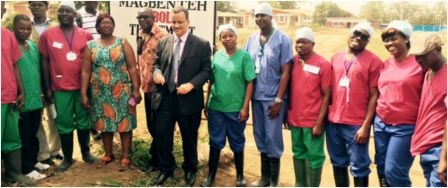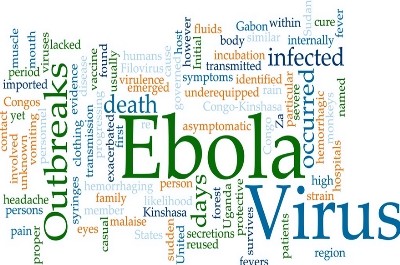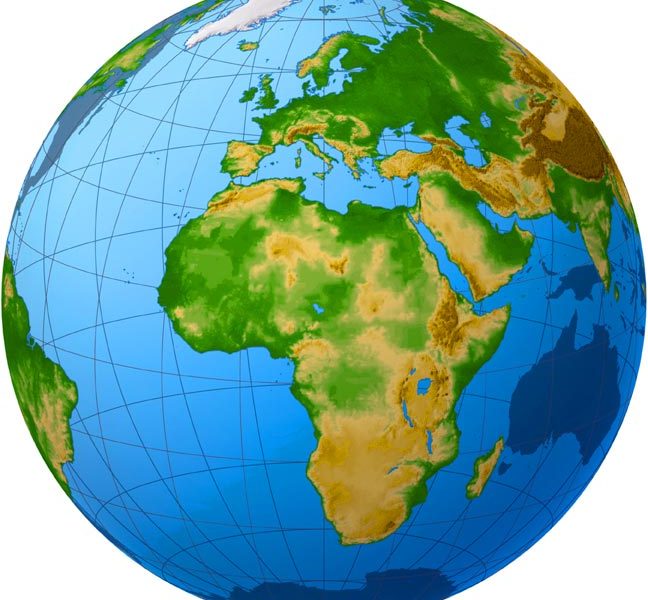UNMEER chief visits African Union-funded Ebola treatment centre in Sierra Leone
The Special Representative of the Secretary-General and Head of the United Nations Mission for Ebola Emergency Response (UNMEER), Ismail Ould Chiekh Ahmed, yesterday visited an Ebola Treatment Centre (ETC) in Magbenteh, Northern Sierra Leone. Ould Chiekh Ahmed inspected facilities at the 100-bed centre, which is said to have one of the highest survival rates in the country.
The Magbenteh ETC is funded by the African Union (AU) under its Support to Ebola Outbreak in West Africa (ASEOWA) programme. The Centre is staffed by epidemiologists, clinicians, public health and communications experts from Nigeria, Uganda, Rwanda, the Democratic Republic of the Congo and Ethiopia.
“I am very happy with the work you are doing. I want to commend you for your hard work. I also would like to thank the African Union for its support,” Ould Chiekh Ahmed told the multinational group of medical practitioners.
The Coordinator of the Magbenteh ETC, Dr. John SSentanu, explained how they have been coping with Ebola patients, particularly during periods of high transmission. He said they have gained much experience that is proving helpful going forward. “With the experience we have now, things are moving faster. At the moment, there is a sharp decline in infections,” he said.
In total, the Centre has treated 157 patients of which 101 have survived. That is an approximate survival rate of 66 percent, one of the highest in the country. This number includes 11 children and two pregnant women. “All the pregnant women brought to the centre have survived,” Dr. SSentanu informed the SRSG and his delegation.
The Magbentheh ETC deals with only confirmed cases. Patients are usually tested at a nearby facility and are only referred to the Centre if confirmed Ebola positive, noted Dr. SSentanu.
There were just three Ebola patients at the Centre when the SRSG visited, meaning that many beds were empty. With declining infections, Dr. SSentanu said they were planning to begin to treat patients who test negative to Ebola but may have other illnesses.
He thanked the SRSG for supporting their work. “We have been receiving the necessary support from UNMEER since we started. We are grateful.”
The ETC comprises low and high risk areas. Medical practitioners and others can walk freely around the low risk area but the high risk area, which is where patients are kept, is cordoned off and only accessible by trained practitioners in full personal protection gear.
The World Health Organization reported last week that the country was witnessing a decline in case incidences not seen since August 2014. The WHO attributes the decline to improvements in contact tracing, isolation and treatment of patients, and increased capacity to undertake safe burials. Guinea, Liberia and Sierra Leone report that between 84 and 99 percent of registered contacts are monitored, though the number of contacts traced per case remains lower than expected in many districts.
The SRSG who was on a three-day visit to Sierra Leone was accompanied on the trip to Magbenteh ETC by Amadu Kamara, Sierra Leone’s UNMEER crisis manager.
Kingsley Ighobor, PIO, UNMEER
Stay with Sierra Express Media, for your trusted place in news!
© 2015, https:. All rights reserved.






